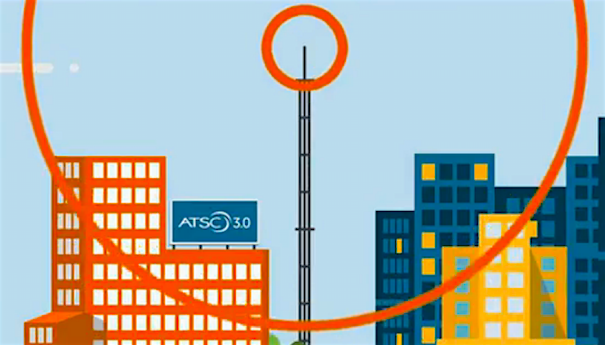What's to Become of VTRs?
TORONTO
More than 35 years ago, videotape machines began to evict 2-inch quad tape machines from U.S. TV stations. Today, increasingly-affordable video servers seem destined to deal the same fate to VTRs.
But do video servers truly spell certain doom for VTRs? On this point, the industry disagrees.
"Are we seeing a demand for servers as VTR replacements?" asked Jim Frantzreb, Avid's senior segment manager for broadcast and enterprise products. "Yes, that's where the whole conversion from videotape to nonlinear video files has been taking us."
Nicholas Bourdon, marketing/ communications director for EVS, agrees.
"We definitely see video servers progressively replacing all VTRs in TV production," Bourdon said. "Not surprisingly, this represents a large potential for server manufacturers like EVS."
Andy Warman, Harris Nexio product marketing manager, doesn't.

At GOCOM Media's master control in Springfield, Ill., VTRs co-exist among 360 Systems Maxx 2400 servers. "Video servers have become the default method for play-out in many stations, but they have not completely replaced VTRs," Warman said. "You will find VTRs in use at many stations. There is a lot of legacy content in archives that is still on tape. And some server-equipped stations still maintain tape as a backup."
GOCOM MEDIA
GOCOM Media owns three medium-market Illinois TV stations: WRSP (Fox, Springfield), WCCU (Fox; Urbana/Champaign) and the recently-acquired WBUI (CW, Decatur). Each one has its own full-power TV transmitter, located about 100 miles away from the other two.
All three stations are managed from a centralized master control at WRSP, which also contains four edit bays, one main studio and two sub-studios. Each station receives its commercial play-out and 35 percent of its programming from a dedicated 360 Systems Maxx 2400 video server.
Because all three Maxx 2400s are in the same location, it has been easy for GOCOM Chief Engineer Scott Washburn to interlink them on the same network. As a result, each GOCOM channel's server content is mirrored on one of the other two servers; providing true 1:1 redundancy.
"In theory, we could actually play-out all three channels from one Maxx 2400, but that would consume the channel we use to record incoming content," Washburn says. "Under the current configuration, we get full redundancy and recording too."
By moving to a server-based play-out system—one that will contain 75 percent of GOCOM's programming content by year's end, with the goal of handling ingest/play-out in full automation using a Telestream TrafficManager system—Washburn has been able to absorb the addition of WBUI without adding staff.
"Our staff no longer has to run around dubbing tapes for later play-out," he said. "With this time-consuming task eliminated, we are able to use the same number of people to run three channels, that previously handled two."
As for the expense of moving from VTRs to servers? Although Washburn won't get into specific prices, he will say that "hardware is cheaper now than it has ever been. The software to do this has been available for years, but it took awhile for hardware costs to come down far enough to make this practical for us."
HANGING ON
The classic argument against servers replacing VTRs has been, and remains, cost. Although prices are dropping "about 5 percent a year," according to Frantzreb, this technology remains far more expensive than VTR machines. In fact, vendors discourage the notion of evaluating servers against VTRs on a cost basis alone, because "it's not just a matter of switching out one box for another," he said. "By moving to a file-based server system, you are overhauling your workflow; making it far more efficient and cost-effective on a total basis—not just in terms of recording and playing out video."
That said, money still matters; especially in the current economic climate. In particular, "stations that are dependent on VTRs for all of their play-out/recording operations are taking a little more time to acquire servers," Washburn said.
EVS' Nicholas Bourdon agrees. "Indeed, cost remains a key decision criteria for broadcasters," he said. To overcome broadcast executives' resistance to spending more, "we like to present the gain of productivity we can provide to broadcasters, with a single server platform ingesting, playing back and transferring media to several post-production stations all at the same time."
Then there's reliability: According to Bourdon, "Many broadcasters and stations are still reluctant to move to full tapeless solutions, because of the lack of reliability of digital systems when it comes to live ingest." Until broadcasters believe that their server-based installations are bulletproof, they will count on VTRs as a trusted and proven backup.
EXTINCTION MAY HAVE TO WAIT
The argument that small market stations will cling desperately to their VTRs doesn't wash with Warman. "After all, the second broadcast server ever sold was built for a small North American station that didn't want to waste time managing commercials on tape," he said. "That was in 1992."
However, the VTR's proven reliability and economy are likely to keep this technology alive for some time yet; until the migration to nonlinear file-based video has gone far enough to make them obsolete. And that's not the only factor at play.
"So many local TV spots are produced on tape and brought to the station on tape that VTRs are going to be needed for some time yet," Washburn said.
The moral to this story is that VTRs will continue to play a role, albeit diminishing, at U.S. TV stations for the foreseeable future. One day video servers will likely relegate VTRs to broadcast museums alongside 2-inch quads, but not quite yet.
The professional video industry's #1 source for news, trends and product and tech information. Sign up below.
